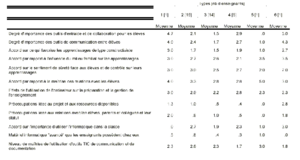Methodology tutorial - exploratory data analysis: Difference between revisions
m (using an external editor) |
m (using an external editor) |
||
| Line 25: | Line 25: | ||
* '''Under construction ''', use with care !! | * '''Under construction ''', use with care !! | ||
=== Cluster Analysis == | == Use of simple descriptive statistics == | ||
=== Summary tables === | |||
=== Boxplots === | |||
== Cluster Analysis == | |||
</div> | |||
* Cluster analysis or classification refers to a set of multivariate methods for grouping elements (subjects or variables) from some finite set into clusters of similar elements (subjects or variables). | * Cluster analysis or classification refers to a set of multivariate methods for grouping elements (subjects or variables) from some finite set into clusters of similar elements (subjects or variables). | ||
| Line 53: | Line 63: | ||
(sorry this is hardly readable) | (sorry this is hardly readable) | ||
== Principal component analysis == | |||
[[Category: research methodologies]] | [[Category: research methodologies]] | ||
[[Category: tutorials]] | [[Category: tutorials]] | ||
Revision as of 18:54, 5 March 2009
This article or section is currently under construction
In principle, someone is working on it and there should be a better version in a not so distant future.
If you want to modify this page, please discuss it with the person working on it (see the "history")
<pageby nominor="false" comments="false"/>
This is part of the methodology tutorial (see its table of contents).
Introduction
This tutorial is a short introduction to simple multi-variate exploratory data analysis. There exist many techniques, here we just introduce cluster analysis and Factor Analysis (principal components).
- Learning goals
- Be able to select a procedure for exploratory data analysis
- ........
- Prerequisites
- Moving on
- none
- Level and target population
- Beginners
- Quality
- Under construction , use with care !!
Use of simple descriptive statistics
Summary tables
Boxplots
Cluster Analysis
- Cluster analysis or classification refers to a set of multivariate methods for grouping elements (subjects or variables) from some finite set into clusters of similar elements (subjects or variables).
- There different kinds of cluster analysis. The most popular are : hierarchical cluster analysis and K-means cluster.
Typical use case examples: Classify teachers into 4 to 6 different groups regarding ICT usage
- Hierarchical cluster analysis
Tries to identify similar cases in progressive steps. This procedure allows to produce a dendogram (tree diagram of the population)
- Example
- classification of teachers
- A hierarchical analysis of 36 survey variables allowed to identify 6 major types of teachers with respect to ICT use:
- Type 1 : The "convinced teacher" (l’enseignant convaincu)
- Type 2 : The "active teacher" (les enseignants actifs)
- Type 3 : The "motivated teacher working within a bad environment" (les enseignants motivés ne disposant pas d’un environnement favorable)
- Type 4 : The "willing but not ICT-compentent teacher" (les enseignants volontaires, mais faibles dans le domaine des technologies(
- Type 5 : The "ICT-competent teacher unwilling to use ICT in the class" (l’enseignant techniquement fort mais peu actif en TIC)
- Type 6 : The "Willing and relatively weak in ICT teacher" (l’enseignant à l’aise malgré un niveau moyen de maîtrise)
In order to come up with such labels like "convinced teacher" you have to list the means of all cluster variables and use your imagination.
(sorry this is hardly readable)

